#gujarat coast
Text
गुजरात के पास पहुंची परमाणु बम से लैस अमेरिकी पनडुब्बी, मची सनसनी, निशाने पर चीन या पाकिस्तान?
गुजरात के पास पहुंची परमाणु बम से लैस अमेरिकी पनडुब्बी, मची सनसनी, निशाने पर चीन या पाकिस्तान?
अमेरिका ने दुनियाभर में बढ़ रहे तनाव के बीच अरब सागर में गुजरात और पाकिस्तान की जलसीमा के पास अपनी महाविनाशक परमाणु पनडुब्बी को तैनात किया है। यही नहीं अमेरिका ने परमाणु बम से लैस मिसाइलों को ले जाने में सक्षम पनडुब्बी ‘यूएसएस वेस्ट वर्जीनिया’ को तैनात करने की खबर का सार्वजनिक रूप से ऐलान भी किया है। विश्लेषकों के मुताबिक अमेरिका का यह ऐलान अपने आप में बहुत ही दुर्लभ मामला है। अमेरिका अपनी परमाणु…

View On WordPress
#us nuclear ballistic missile submarine#us nuclear submarine in arabian sea#us nuclear submarine near gujarat coast india#us nuclear submarine vs china iran saudi arabia#uss west virginia presence in arabian sea
2 notes
·
View notes
Text
#Best Beaches in Gujarat#Mandvi Beach#Gujarat’s West Coast#Tithal Beach#Shivrajpur Beach Dwarka#Gopnath Beach#coastal landscapes#Arabian Sea#sandy stretches
0 notes
Text
6 Pakistani nationals held with drugs worth Rs 200 crore off Gujarat coast | India News
6 Pakistani nationals held with drugs worth Rs 200 crore off Gujarat coast | India News
AHMEDABAD: A joint team of Indian Coast Guard and Gujarat Anti Terrorist Squad (ATS), apprehended a Pakistani fishing boat, carrying about 40 kg heroin worth around Rs 200 crore, 6 miles inside Indian waters off Arabian Sea on Wednesday. The boat named Al Tayyasa is being brought to Jakhau port for investigation. The ICG officials said two of its fast attack boats caught the Pakistani boat 33…

View On WordPress
#al tayyasa#ats#Breaking news#Google news#gujarat#icg#India#India news#India news today#indian coast guard#Today news
0 notes
Text
গুজরাটে জলপথে মাদক পাচারের চেষ্টা, উদ্ধার ৪০ কেজি হেরোইন
গুজরাটের (Gujarat) উপকূল থেকে উদ্ধার ৪০ কেজি হেরোইন (Heroin)। ভারতীয় কোস্ট গার্ডের (Indian Coast Guard) এবং গুজরাট অ্যান্টি টেরোরিস্ট স্কোয়াড (Gujarat Anti Terrorist Squad) যৌথ অভিযান করে এই হেরোইন বাজেয়াপ্ত করা হয়েছে। এই ঘটনার জেরে সূত্রের খবর, ছয় পাকিস্তানিকে গ্রেপ্তার করল ভারতীয় উপকূল রক্ষা বাহিনী। ওই পাকিস্তানিদের উদ্দেশ্য ছিল উদ্ধার হওয়া প্রায় ২০০ কোটি টাকার মাদক ভারতের নানা প্রান্তে ছড়িয়ে…

View On WordPress
0 notes
Text
भारत की सीमा में घुसने की कोशिश कर रहे थे दो पाकिस्तानी, BSF ने दबोचे
भारत की सीमा में घुसने की कोशिश कर रहे थे दो पाकिस्तानी, BSF ने दबोचे
Image Source : BSF GUJRAT TWITTER
Fishermen arrested by BSF
Highlights
दोनों मछुआरे पाकिस्तान के पॉइंट जीरो पर रहते हैं
BSF के चेतावनी देने के बावजूद कर रहे थे भागने की कोशिश
हिरासत में लिए गए दोनों मछुआरों के टखनों में लगी गोली
Pakistan: पाकिस्तान की तरफ भारत की सीमा में घुसपैठ की घटनाओं में कोई कमी नहीं आ रही है। इस बार घुसपैठ की कोशिश गुजरात की जल सीमा से की गई। जहां कार्रवाई करते हुए सीमा…

View On WordPress
#army#border security#border security force#BSF#coast guard#fishermen#Gujarat#indian water border#Infiltration#National Hindi News#Pakistan#patrol#water border#गश्ती दल#गुजरात#घुसपैठ#जल सीमा#तट रक्षक#पाकिस्तान#बीएसएफ#भारतीय जल सीमा#मछुआरे#सीमा सुरक्षा#सीमा सुरक्षा बल#सेना
0 notes
Photo

Spaniards and Portuguese in India and the Malay Archipelago, 1498-1580.
“Historical atlas”, William Shepherd, University of London Press, 3rd ed. 1924
by cartesdhistoire
Muslim merchants from Gujarat, based in Cambay, dominated maritime trade in the Indian Ocean in the 15th century, supported by Hindu and Jain financiers and an organized network of correspondents. The Malabar coast, a major pepper supplier, served as a hub for commercial interactions between Arab merchants from the Gulf of Aden or Oman and Chinese merchants – or their intermediaries – from Sumatra and Malacca. Muslim merchants primarily engaged in the spice trade.
The arrival of Vasco da Gama in Calicut in 1498 disrupted this system. In 1502, King Manuel entrusted him with commanding a second expedition aimed at eliminating all Muslim presence in the Indian Ocean. The Sultans of Gujarat and the Deccan sought assistance from a Mamluk fleet to counter the Portuguese, but it was defeated before Diu in 1509, paving the way for Portuguese conquests of Goa in 1510, Malacca in 1511, Hormuz in 1515, Diu in 1535, and Daman in 1539.
The Portuguese occupied the southwest coast of Ceylon from 1505 to access cinnamon, establishing a fort in Colombo in 1518. They controlled the north, west, and south coasts of the island, key areas for the cinnamon and precious stone trade.
The Moluccas were another target because the Banda Islands produced nutmeg, while Ternate and Tidore produced cloves. The Portuguese established privileged relations with the sultans of Ternate and Tidore, facilitating their settlement in Amboyna and Timor, despite the capture of Malacca from Sultan Mahmoud Shah.
The Portuguese monopoly endured until the emergence of the English East India Company and the Battle of Swally in 1612.
Meanwhile, Spain remained engaged in the spice race, aiming to connect America to the Moluccas and their spices. Following expeditions in 1525 (Loayza) and 1528 (Saavedra), Spain secured a definitive return route in 1565 (Urdaneta) and established settlements in the Philippines in 1571.
90 notes
·
View notes
Text
it is not yet clear who was behind the strike near India on Saturday.
23 Dec 23
62 notes
·
View notes
Text
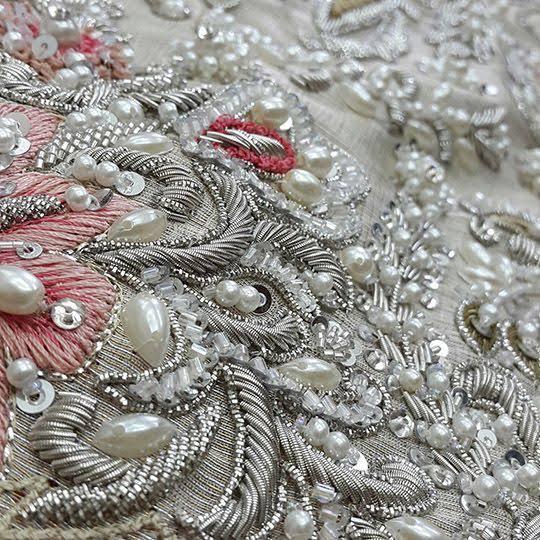

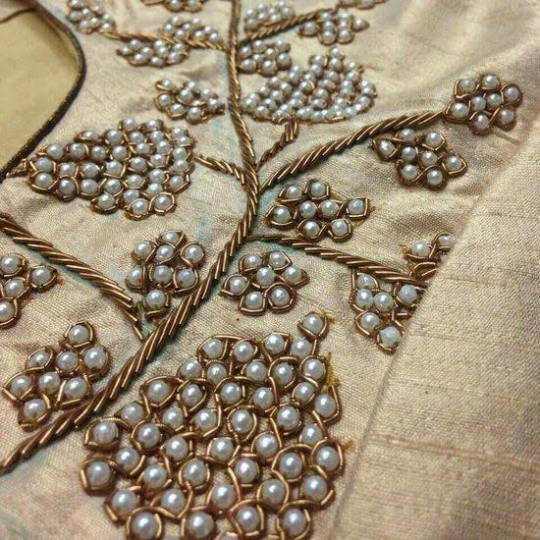
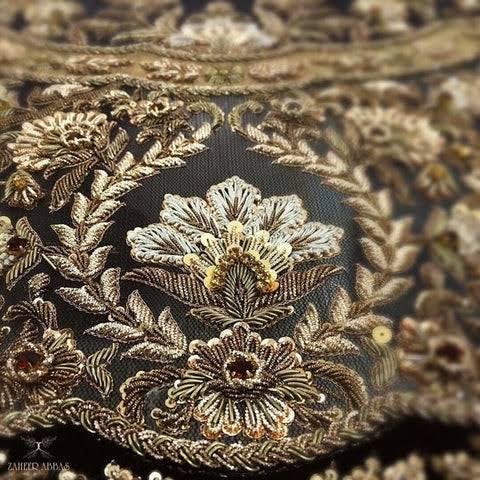
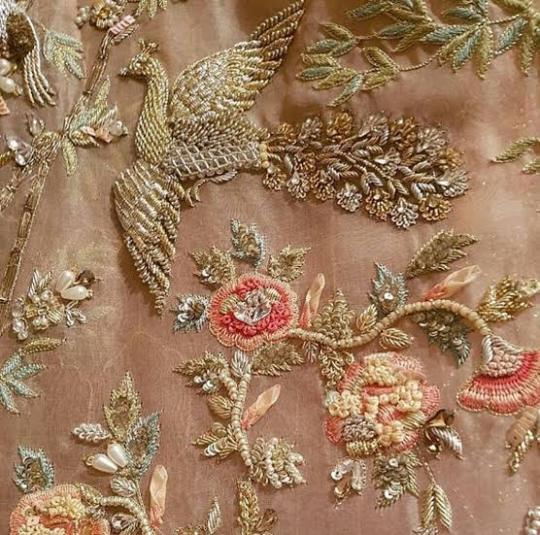
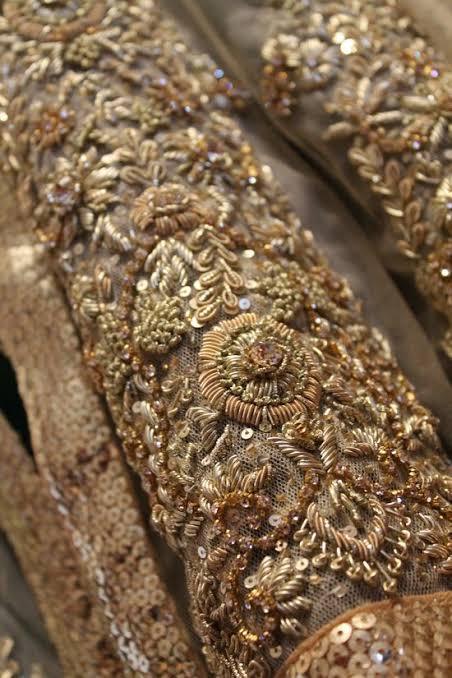
Zari or jari is a form of embroidery from South Asia made using an even thread traditionally made of fine gold or silver. This thread is woven into fabrics, primarily silk, to make intricate patterns and elaborate designs of embroidery. During the Vedic ages, the gold embroidery was associated with the grandeur and regal attire of gods, kings, and literary figures. Zari was popularised during the Mughal era; the port of Surat was linked to the Meccan pilgrimage route which served as a major factor for re-introducing this ancient craft in India.
Real zari was originally made from fine silver or gold thread is drawn from silver or gold alloys. These days, cheap and durable alternatives are used. This non-genuine modern zari is light in weight & more durable than earlier editions. Also, it has the sought after properties of resistance to tarnishing and knotting.
Surat in the state of Gujarat on the west coast of India is the world's largest producer of all types of zari embroidery. The art of zari making has been inherited from father to son for many centuries, and are often passed down in utmost secrecy.
1 / 2 / 3 / 4 / 5 / 6 / 7 | textile series
#textiles#ots#textile art#south asia#india#pakistan#bangladesh#desi tumblr#desiblr#indian fashion#embroidery
423 notes
·
View notes
Text
The year was 1555. Portuguese colonial power was at its peak in the 1500’s. They destroyed Zamorins of Calicut. Defeated the Sultan of Bijapur. Took away Daman from the Sultan of Gujarat, Established a colony in Mylapore, Captured Bombay and made Goa as their headquarters. And while they were at it, pretty much unchallenged, they even ruined the ancient Kapaleeswarar Temple to build a Church over it.
Their next target, the super profitable port of Mangalore.
Their only bad luck, just 14 kilometers south of Mangalore was the small settlement of Ullal - ruled then by a feisty 30 year old woman - RANI ABBAKKA CHOWTA
Initially, they took her lightly and sent a few boats and soldiers to capture and bring her back to Goa - Those boats never came back.
Shocked and enraged, they sent a huge fleet of ships this time, under the command of much celebrated Admiral Dom Álvaro da Silveira - The admiral soon returned, badly injured and empty handed.
Thereafter, another Portuguese fleet was sent - only a few injured from the crew managed to make it back.
Then the Portuguese went on to capture the Mangalore port and the fort anyways, perhaps planning to tackle Rani Abbakka Chowta from the convenient distance of the Mangalore fort.
After the successful capture of Mangalore, a huge army under João Peixoto, an experienced Portuguese General was sent to Ullal.
The brief was simple: Subjugate Ullal and capture Abbakka Chowta.
The plan was foolproof- there was no way a 30 year old lady with a few men could withstand the might of an army of thousands with advanced weapons.
The Portuguese reached Ullal and found it deserted. Abbakka was nowhere in sight.
They roamed around, relaxed and thanked their stars - Just when they were about to call it a victory - Mrs Chowta attacked with 200 of her chosen men - there was chaos all around and many portuguese lost their lives even without a fight
General João Peixoto was assassinated, 70 Portuguese were captured and the rest just ran away.
So if you’re Abbakka Chowta, who’s just defeated a large army of aggressors, killed a general, captured fighters and defended her city - What will you do?
- Rest and enjoy the moment right?
- Right?
- No!
Rani Abbakka Chowta, rode with her men towards Mangalore that same night, and laid a siege of the Mangalore fort - She not just broke inside the fort successfully - but assassinated Admiral Mascarenhas the Chief of the Portuguese power there and forced the remaining Portuguese to vacate the fort.
She didn’t just stop at this but went on to even capture the Portuguese settlement at Kundapura, a full 100 kms, north of Mangalore - Just to make a point.
The Portuguese finally managed to get back at Abbakka Chowta by convincing her estranged husband, to betray for money. She was arrested and put in the prison where she revolted again and was killed while trying to escape.
Abbakka Chowta was a Jain who fought against the Portuguese for four decades, with an army comprising of both Hindus and Muslims, a full 300 years before the First War of Indian Independence in 1857.
What did we Indians do to her, as a mark of our respect and gratitude? - We just forgot her.
We didn’t name our girls after her. We didn’t even teach her stories to our kids.
Yes we did release a Postal Stamp in her name, named a boat after her and erected 2 statues - yes just 2 statues in the whole of India for someone who should be our national hero.
The Indian Coast Guard ship ICGS Rani Abbakka the 1st of a series of five inshore patrol vessels built at Hindustan Shipyard Ltd is named after Abbakka Mahadevi.
We might have got to read a chapter about her in our text books, had she been a European or an American.
Many talk about her being the last Indian to have the power of the agni-ban. In all this cacophony, our generation has lost a great hero - a great source of inspiration.
Still wondering why you’ve not heard about her yet?
26 notes
·
View notes
Note
i'm very interested in shut eye town and i am asking for some fun facts about your story pls and ty /nf
So
There's places in the world that have been protected from Hagos influence known as safetowns
Each usually specialises in a certain field
Havre - Safetown set right in the middle of France, specialises in education
Salāmatī/સલામતી - Safetown set on the coast of Gujarat, India, specialises in nuclear energy
Pale'ia - Safetown set on Mainland Hawaii and the island of Maui, specialises in water treatment
Sacrário - Safetown set around the post city of Paraiba in Brazil, specialises in creating the mobilets (funky vehicles that look like buses but with drills on the front and tank like wheels)
Isertorfik - Safetown set in the inhabited areas of southern Greenland, specialises in rehabilitating Hagoite soldiers
Kuvanda - Safetown set around the post capital city of Zimbabwe, Harare. Specialises in creating technology and agriculture.
Seiiki/聖域 - Safetown set on the island of Oshima, Japan. Specialises in healthcare.
Inuinui- Safetown set on the island of Fiji. Specialises is weapons and armour making.
There's also 2 safeschools, a little less organised as they were set up by children overthrowing (with or without teachers) the Hago regime. Prosperity Integrated School in post Sheffield, England, and Hòa Bình School in post Tuyên Quang, Vietnam
All the names translate to words like "Haven" or "Safety" in their respective languages :)
4 notes
·
View notes
Photo


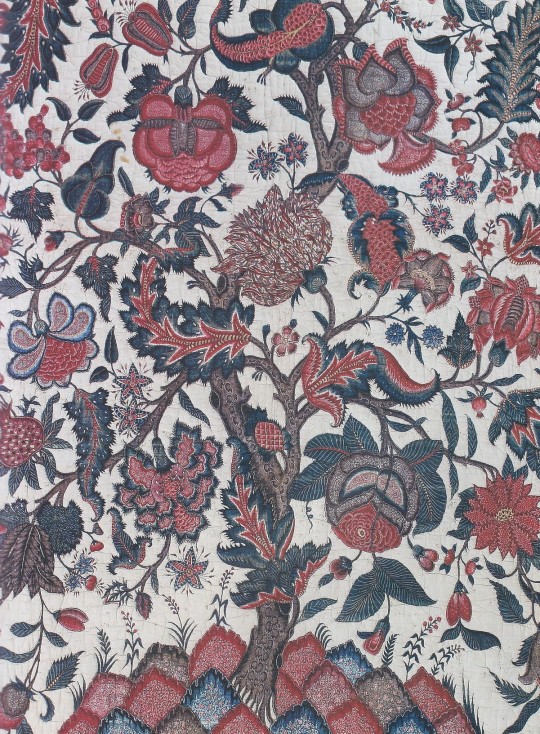





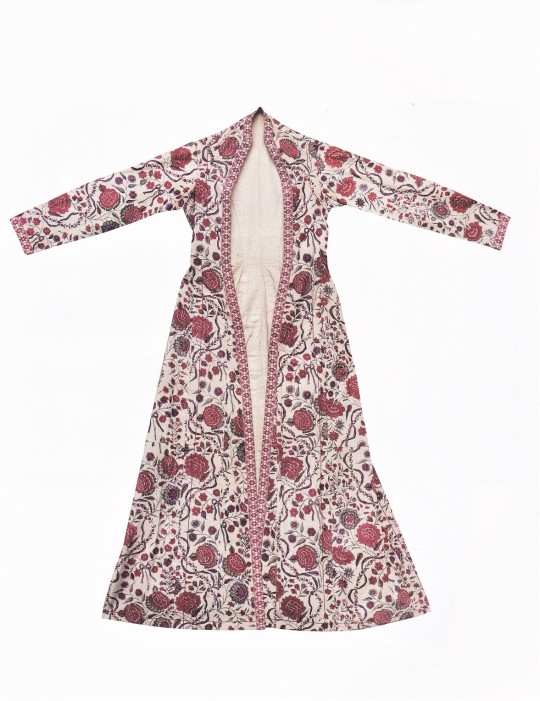

When Indian Flowers Bloomed in Europe
Masterworks of Indian Trade Textiles,1600-1780, in the Tapi Collection
Ebeltje Hartkamp-Jonxis
Niyogi Books, New Dehli 2022, 220 pages, 28 x 21 cm, all colour, ISBN 978-93-91125-17-2
euro 70,00
email if you want to buy :[email protected]
It is a fascinating story that the merchant companies of Europe, established with the aim of sourcing exotic eastern spices, stumbled upon Indian handmade textiles and found these a highly profitable product for their home markets. This process was to have far-reaching consequences for colonial history.
In When Indian Flowers Bloomed in Europe the author takes us on a tour of 30 masterpieces of Indian textiles from the TAPI Collection, commissioned by European patrons in the 17th and 18th centuries. Presented here are outstanding examples of large, intricately hand-drawn, dye-painted cotton chintzes made in the Coromandel Coast, and embroidered palampores and garment pieces made in Gujarat and the Deccan. Textiles made for Dutch and British patrons demonstrate the aesthetic high point achieved by Indian artisans in the 17th and 18th centuries. Indian patterned cottons such as these, with their infinite variety of floral motifs, left a profound and enduring impact on textile designers in the western hemisphere, unexpectedly setting the stage for the Industrial Revolution.
The informative text is accompanied by rarely seen images from museums and private collections, offering fresh insights into these iconic examples. Three essays followed by individually explained catalogue entries for each textile add to a greater understanding of an important, historical phase in the development and global recognition of India’s textile art, now preserved in museums and collections worldwide as a testament to the handiwork of the skilled artisans of India.
07/01/23
orders to: [email protected]
ordini a: [email protected]
twitter: @fashionbooksmi
instagram: fashionbooksmilano, designbooksmilano tumblr: fashionbooksmilano, designbooksmilano
#indian flowers#Indian Trade Textiles#1600-1780#Tapi Collection#chintzes#textiles books#fashion books#fashionbooksmilano
18 notes
·
View notes
Text
10 Random Entries from the Dictionary of Islamic Architecture
The following entries were pulled from the Dictionary of Islamic Architecture (1995).
Funduq (structure type)
Coral (construction material)
Kufa (city)
Songhay (people)
Süleymaniye (named building complex)
Squinch (architectural facet)
Aghlabid (people, lineage)
al-Aqsa Mosque (building)
Arasta (structure type)
Hassan Fathy (person, architect)

❯ ❯ Funduq (structure type)

North African term for a small, urban shop complex. A typical funduq is a square two-story structure built around a central courtyard with shops on one floor and store rooms on the other. Equivalent to a khan in the Middle East.
Text source: Peterson (1995) Dictionary of Islamic Architecture, page 91.
Photo source: (1) Barbara J. Anello-Adnani; (2) Islamic Architectural Heritage
❯ ❯ Coral (construction material)

Coral is used as a building material for coastal settlements throughout the Indian Ocean, Arabian/Persian Gulf and the Red Sea.
Two main types of coral stone are used for construction: fossil coral quarried from the coastal foreshore, and reef coral which is cut live from the sea bed. Fossil corals are more suitable for loadbearing walls whilst reef corals such as porites are more suitable for architectural features such as door-jambs or mihrab niches. Fossil corals are mostly from an order of coral known as Rugosa, which is now extinct. When quarried this coral forms rough uneven blocks known as coral rag. Although this can be cut into rough blocks, it cannot be dressed to a smooth finish and therefore has to be used in conjunction with another material to produce an even surface.
Living coral from the reef is easier to cut and dress to a smooth finish, although it does require hardening by exposure to the air. The preferred type of reef coral for building is porites because of its compact vascular structure which means it is both strong and easy to carve. However, this is not the only type used and, at the eleventh-century site of Ras al-Hadd in Oman, at least seven different types were noted. In the Maldives and Bahrain, platy corals such as oxypora and montipora are used for partitions.
The origins of coral-building are not well understood although it is generally believed that the technique originated on the coasts of the Red Sea. The earliest example was discovered at the site of al-Rih, in the Sudan, where a Hellenistic cornice made of coral was found reused in an Islamic tomb. From the Red Sea, the technique spread to the East African coast of the Indian Ocean where it was established as the primary building material for monumental buildings. In the Arabian/Persian Gulf, there is another tradition of coral stone construction although the antiquity of this tradition is in doubt as suitable coral has only grown in the area within the last 1,000 years. At the present time, the use of coral stone extends over large areas of the Indian Ocean and includes the coastline of India (Gujarat), the Maldives and Sri Lanka. The origins of coral-building in these areas has not been investigated, although it generally seems to be associated with Islamic traders.
See also: Bahrain; East Africa; Maldives; Qatar; Saudi Arabia; Sudan; United Arab Emirates.
Text source: Peterson (1995) Dictionary of Islamic Architecture, pages 54-55.
Photo source: Getty
❯ ❯ Kufa (city)

Southern Iraqi city founded in the early Islamic period.
Kufa is located on the west bank of the Eurphrates near the Shi'a shrine city of Najaf. Like Baghdad, Kufa was a purely Islamic foundation, although it stood close to the Lakhimid capital of al-Hira.
After the battle of Ctesiphon and the capture of al-Mad'ain (Ctesiphon and Seleucia) the Arab armies settled in the old Sassanian capital. Soon afterwards, the armies moved to Kufa because of its pleasanter climate and strategic location on the west bank of the Euphrates (i.e., easy access to Syria and the Hijaz). In 645, Ali transferred the seat of government to Kufa. The assassination of Ali in the Great Mosque of the city in 645 brought an end to the city's role as capital.
The original city had no walls and was simply surrounded by a ditch. The principal monuments in Kufa are the Great Mosque and the Dar al-Imara, or Governor's Palace. The Great Mosque consists of a number of different phases from the early Islamic period to the present day. The first mosque on the site was laid out by a man who threw spears to each of the cardinal points to delineate a square two-spear throws long. The area was enclosed by a ditch and the only permanent architectural feature was a marble colonnade 20m long. The columns were taken from the nearby city of al-Hira. In 670 CE, the mosque was expanded and covered with a flat roof resting on stone columns. The mosque visible today has a beautiful golden dome and contains the tombs of the two saints Muslim ibn Aqeel and Hani ibn Arwa. The golden dome and tilework date to the Saffavid period (seventeenth and eighteenth centuries), although the outer wall of the mosque which is supported by twenty-eight semi-circular buttress towers probably originates in the early Islamic period.
To the south of the Great Mosque is the Dar al-Imara, which was excavated by the Iraqi Antiquities Authority. The palace is enclosed by a square enclosure 170m per side with walls 4m wide supported by twenty semi-circular buttress towers and four round corner buttresses. In the center of the palace there is a square (domed?) chamber approached by a vaulted hall which was probably the throne room.
See also: Dar al-Imara; Iraq.
Further reading: (1) S. Ahmad, 'Survey of the Kufa area' (in Arabic), Sumer 21:229-252, 1965. (2) M. A. Mustafa, 'Dar al Imara at Kufa', Sumer 21:229-252, 1965. (3) M. A. Mustafa, 'Preliminary report on the excavations in Kufa during the third season', Sumer 19:36-65, 1963.
Text source: Peterson (1995) Dictionary of Islamic Architecture, page 156.
Photo source: (1) Taghrib News; (2) Narjes Ahmed/Wikimedia Commons.
❯ ❯ Songhay (people)

The people who inhabit the banks of the Niger river between Gao and Dendi in West Africa. The Songhay people were the ruling population of the empire of Gao during the fifteenth and sixteenth centuries. Some of them were Muslim before the eleventh century but some have remained pagan to the present day. Little is known of early Songhay architecture, although ancestor-worship seems to have been expressed through earthen burial mounds. Elements of this tradition seem to have been incorporated in Islamic monuments where prominent people are buried within solid earth pyramid-like constructions, the most famous of which is the tomb of Askiya Muhammad at Gao.
See also: Gao; West Africa.
Text source: Peterson (1995) Dictionary of Islamic Architecture, page 262.
Photo source: (1) Reuters/Joe Penney; (2) Reuters/Joe Penney; (3) Islamic Architectural Heritage.
❯ ❯ Süleymaniye (named building complex)

Ottoman mosque complex in Istanbul built for Suleyman the Magnificent between 1550 and 1557.
The complex consisted of a hospital, medical school, hospice, soup kitchen, primary school, four madrassas (colleges), shops and coffee houses in addition to the mosque itself. The complex is built on an artificial platform on top of a hill that overlooks the Bosphorus; to the east the ground slopes away rapidly. The mosque precinct contains three main areas, the mosque itself in the center, a courtyard to the north and a tomb garden to the south which contains the tomb of Suleyman and his wife. The mosque is covered with a large central dome (25m diameter) with two large semidomes of equal radius, one above the north entrance and one above the mihrab. The central area is flanked by side aisles covered by small domes of alternating size. Like that of its predecessor, the Sehzade Cami, the central dome rests on four huge central piers placed in a square. The whole building is illuminated with more than a hundred windows and grilles, many of which are filled with stained glass made by the celebrated Ottoman glass-maker Ibrahim Sarhos. Outside at each corner of the courtyard are four minarets with balconies supported on muqarnas corbels. This is the first Ottoman building in Istanbul to have four minarets, although previously the Üc Serefeli in Edirne also had four. The sides of the building are enlivened with several entrances (three on each side), approached by steps and two-tier arcaded galleries placed between the outer corner buttresses.
The tomb garden behind the mosque contains a large cemetery which has grown up around the tombs of Suleyman and Roxelane. Both tombs are octagonal structures in the traditional Ottoman fashion, although Suleyman's tomb unusually faces east instead of north. Roxelane's tomb is smaller and placed to one side of Suleyman's tomb which stands in the middle of the garden. The interiors of both tombs are decorated with Iznik tiles, although Roxelane's tomb is significantly less grand. Suleyman's tomb is surrounded by a colonnaded veranda with a porch on the east side. This arrangement is echoed internally where Suleyman's sarcophagus is surrounded by a circular colonnade.
The arrangement of the complex outside the mosque precinct consists of an L-shaped arrangement of buildings on the north-west side and a smaller group to the east. The eastern complex is built on a steep hill so the madrassas are stepped into the hillside. On the north-west corner of the complex is the tomb of the architect Sinan.
See also: Istanbul; Ottomans; Sinan.
Text source: Peterson (1995) Dictionary of Islamic Architecture, page 268-269.
Photo source: (1) CamelKW/Flicker; (2) Kevser Salih/Getty; (3) Izzet Keribar/Getty.
❯ ❯ Squinch (architectural facet)

Small arch in the corner of a building that converts a square space to an octagonal area, which may then be covered with a dome.
Text source: Peterson (1995) Dictionary of Islamic Architecture, page 267.
Photo source: (1) Dig Magazine; (2) José Carlos Palacios Gonzalo/Rana Munir Alkadi; (3) José Carlos Palacios Gonzalo/Rana Munir Alkadi.
❯ ❯ Aghlabid (people, lineage)

Dynasty which ruled the north African province of Ilfriqiyya during the ninth century.
Although nominally under Abbasid control, the Aghlabids were able to exercise a great deal of independence. Militarily their great achievement was the conquest of Byzantine Sicily.
The Aghlabids were great patrons of architecture, and much of their work has survived. Their work demonstrates a mixture of Byzantine and Abbasid building styles. One of the most important projects was the rebuilding of the Great Mosque of Qairawan and the addition of the huge three-tiered minaret/tower. The Aghlabids were also responsible for major irrigation and water supply systems, the most famous example of which are the huge circular cisterns of Qairawan. Much of their effort was also directed towards the development of the coastal towns as bases from which to launch the conquest of Sicily. The military nature of Aghlabid rule is further reflected in the large number of ribats, or fortified monasteries, which they constructed.
See also: Tunisia.
Further reading: A. Lezine, Architecture de L'Ilfriqiyya: Recherche sur les monuments aghlabides, Paris 1966.
Text source: Peterson (1995) Dictionary of Islamic Architecture, pages 6-7.
Photo source: (1) Richard Mortel/Flicker; (2) Alberto Biscaro/Masterfile.
❯ ❯ al-Aqsa Mosque (building)
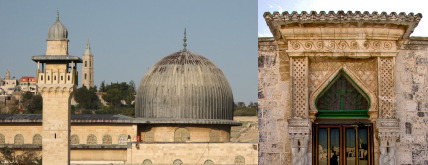
The principal mosque of Jerusalem which forms part of the sacred enclosure (haram) with the Dome of the Rock at the center.
The Aqsa Mosque is located on the southern part of the Haram al-Sharif on an axis with the south door of the Dome of the Rock. In the time of Umar, a mosque is known to have been built on the site although it appears to have been a semipermanent structure made out of re-used material, hastily put together to form a covered prayer area with a shed roof. During the reign of al-Walid the mosque was rebuilt with its present alignment.
Only a small part of al-Walid's mosque survives, but this indicates that the aisles all ran perpendicular to the qibla wall (as they do today). This arrangement is unusual and recalls the arrangement of Byzantine churches, such as the Church of the Nativity in Bethlehem.
The earthquake of 748 severely damaged the mosque, which was subsequently rebuilt by the Abbasid caliphs al-Mansur (759) and al-Mahdi (775). The mosque of al-Mahdi had a raised central aisle leading to the mihrab in front of which he built a wooden dome; either side of the central aisle were seven side-aisles. An earthquake of 1033 destroyed the mosque and it was once again rebuilt by the Fatimid caliph al-Zahir in 1035. This mosque had a total of seven aisles, a central aisle with three aisles on either side.
See also: Damascus Great Mosque; Dome of the Rock; Jerusalem; Medina; Palestine; Umayyads.
Further reading: R. W. Hamilton, The Structural History of the Aqsa Mosque. A Record of Archaeological Gleanings from the Repairs of 1938-42, Government of Palestine, Jerusalem 1949.
Text source: Peterson (1995) Dictionary of Islamic Architecture, pages 22-24.
Photo source: (1) Niels M. Knudsen/Flicker; (2) Sam Rohn/Flicker.
❯ ❯ Arasta (structure type)

Turkish term for a street or row of shops whose income is devoted to a charitable endowment or waqf (equivalent to a European shopping arcade).
Arastas are found in most of the regions of the former Ottoman Empire and usually form part of a commercial or religious complex which may include a han (or khan), a mosque and bath house. Many arastas were probably made of wood but these have largely disappeared leaving only those made of more permanent materials. Arastas are often covered over with a barrel vault and have a row of shops either side of a central street, but they can also be open to the sky. Important examples of arastas include the Misir Carsi in Istanbul, the arasta associated with the Selimiye mosque in Edirne and the arastas at the Sokollu complex· at Luleburgaz and the Selim I complex at Payas both designed by Sinan.
See also: Ottomans.
Further reading: M. Cezar, Typical Commercial Buildings of the Ottoman Classical Period and the Ottoman Construction System, Istanbul 1983.
Text source: Peterson (1995) Dictionary of Islamic Architecture, page 24.
Photo source: (1) Banu/Flicker; (2) Alda Cravo Al-Saude/Flicker.
❯ ❯ Hassan Fathy (person, architect)

Egyptian architect noted for his use of traditional materials to build modern Islamic structures.
Born in 1900, the son of a wealthy landowner, Hassan Fathy was brought up in Cairo, Alexandria and Europe. He studied architecture at the University of Cairo whence he graduated in 1926. In 1927, on his first visit to one of the family estates, he was shocked by the terrible living conditions of the poor and resolved to find a way to house the poor reasonably. He also conceived a love for the Egyptian countryside, which was to motivate him for the rest of his life. He realized that imported western material and technology was too expensive and inappropriate for rural housing in Egypt. Instead, Fathy thought that mud brick, the traditional building material of Egypt, should be used in modem constructions. Although he realized that traditional designs were sometimes too cramped and dark for modern housing, Fathy argued that this was not the fault of the material.
In 1937 Fathy held exhibitions of his work at Mansoura and Cairo, which resulted in several commissions from wealthy patrons. However, these buildings were quite expensive and relied on timber for their flat roofs. With the outbreak of the Second World War and the resulting shortage of timber, he had to find a new method of roofing his houses. On a visit to Upper Egypt, Fathy noticed that the Nubian villages were roofed with mud brick vaults produced without wooden centering. The method used was to lean the bricks against an end wall so that all the bricks leant against each other. Fathy employed the local Nubian builders and undertook several projects using these workers. The most important of these projects was the Nasr House in Fayyum and the tourist rest-house at Safaga.
In 1946 Fathy was approached by the Department of Antiquities who wanted to move the people of Gurna in western Luxor out of the ruins of ancient Thebes where they had been living. The Gurnis had been living in the ancient Necropolis for several generations and some lived in the tombs themselves. Nevertheless, the Department of Antiquities issued a decree stating that they wanted the 7,000 people moved to a new settlement, which was to be designed by Fathy. The settlement was to contain homes for 1,000 families and include public buildings like a mosque, a covered market, schools and a theatre. The houses were built around courtyards and arranged in neighborhood groups which had access to the main streets. Although built with traditional materials, Fathy made use of earth scientists and structural and mechanical engineers to improve his designs and ensure that they worked. Part of the project was to involve the future inhabitants in the construction, both as a cost-saving measure and so that they were not alienated from their new housing.
However, the project faced considerable difficulties in implementation through the opposition of some of the Gurni Sheikhs and the slow-moving bureaucracy of the Egyptian Antiquities Department.
In addition there was general suspicion of a project, which involved traditional materials at a time when Modernism was seen as the only way to build. In the end, only one-fifth of the project was completed and some parts of the village like the khan and the craft center remain unused. Nevertheless, the mosque is well used and maintained and the Department of Antiquities has restored the theatre, belatedly realizing the value of Fathy's work. Despite the difficulties New Gurna showed the potential of mud-brick architecture and the value of training people in traditional techniques.
Other important projects carried out by Fathy in the 1950s were at Lu'luat aI-Sahara in the Nile Delta and the village schools project. At Lu'lat al-Sahara, houses were built in pairs, together with a mosque and a school. The village schools project involved Fathy in designing a school, which was to be the prototype for village schools throughout Egypt. The design consisted of domed rooms opening onto courtyards with ventilation shafts to cool the interior during the summer. Unfortunately, only two of the schools were built, one at Fares and the other at Edfu.
In 1957, Fathy left Egypt for several years to work for an architectural firm in Athens, specializing in the Middle East, and during this time he designed a traditional housing scheme in Iraq. In the early 1960s, Fathy returned to Egypt where he undertook two further major projects, a training center in the Nile Valley and a new town in the Kharga oasis. Unfortunately the training center was subsequently destroyed because of its bad location and the town known as New Bariz was abandoned because of the 1967 war.
In the 1970, Fathy began writing books about his work, which were highly successful in universities throughout the world where the appeal of Modernism was wearing off. He showed that it was possible to design and build desirable residences and functional buildings, which respected the traditional values of a culture and were also cheap. Since the 1970s, Fathy's work in Egypt was concentrated on private houses and commissions. These buildings were constructed with increasingly sophisticated designs based on harmonic units of measurement derived from the dimensions of the human body. Probably the most important recent commission was for a Muslim community in New Mexico known as Dar al-Salam and built in 1981.
Further reading: (1) H. Fathy, The Arab House in the Urban Setting: Past, Present and Future, Fourth Arab Carreras Lecture, University of Essex, November 1970. London 1972. (2) H. Fathy, Architecture for the Poor, Chicago and London 1973. (3) H. Fathy, Natural Energy and Vernacular Architecture, Chicago 1985. (4) G. Leick, 'Hassan Fathy, architect for the poor', Egyptian Bulletin May 1988: 4-8. (5) J. M Richards, I. Serageldin and D. Rastorfer, Hassan Fathy, London 1985. (6) A. Schkifer, 'Hassan Fathy: A voyage to New Mexico', Arts and the Islamic World 1(1): 1982/3.
Text source: Peterson (1995) Dictionary of Islamic Architecture, pages 84-86.
Photo source: (1) Green Prophet; (2) Green Prophet; (3) Marc Rykaert/Wikimedia Commons.
#islamic architecture#writeblr#writing research#masterpost#writing#writing tips#writing advice#architecture research#novel writing#funduq#construction material#songhai#songhay#kufa#suleymaniye mosque#fiction writing#squinch#aghlabid#alaqsa mosque#arasta#hassan fathy#architect#structure#turkey#morocco#north africa#iraq#istanbul#tomb garden#ottoman empire
10 notes
·
View notes
Text
World Lion /day
World Lion Day is celebrated every year on August 10 to raise awareness
about the conservation of lions and their habitats.
It was first established in 2013 by Big Cat Rescue, the world’s largest
accredited sanctuary dedicated to lions.
Recent studies have revealed that lions were once present in the Arabian
Peninsula, significantly influencing Arab culture.
It is noted that Arabic dialects and literature contain an extensive array of
almost 700 distinct names or expressions referring to the lion.
Research reveals that lions occupied a vast and diverse range spanning the Arabian Peninsula, North Africa, Eurasia, and parts of India.
The lion’s habitat extended from latitudes as far south as 15°N (Yemen) to 18°N
(Mali, Chad) and as far north as 45-48°N (Bulgaria, Ukraine, Hungary).
It is noteworthy that lions thrived in various environments, including deserts,
steppes, and maritime coasts.
They are social animals and live in groups called prides. A pride typically consists of multiple females, their offspring, and a few adult males.
Distribution and Habitat:
Lions are found in sub-Saharan Africa and a small population exists in the Gir Forest
National Park in the Indian state of Gujarat.
Protection Status:
IUCN Red List: African Lion: Vulnerable
(Globally) Asiatic Lion: Endangered.
CITES: Appendix I for populations of India, all other populations are
included in Appendix II.
Wildlife (Protection) Act 1972: Schedule I
Regards,
Tunning facts
Blog to Current Related Read More
2 notes
·
View notes
Text
Metro Cities of India
National Capital Region (NCR)
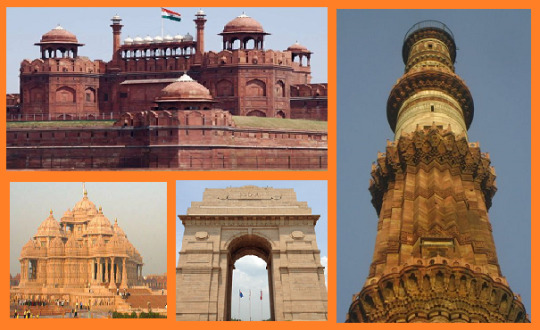
National Capital Region incorporates Delhi and a few locale encompassing it from the provinces of Haryana, Uttar Pradesh and Rajasthan. Delhi is the capital of India and a combination of different workmanship and culture. It has the number of inhabitants in 25,735,000. It is the biggest business focus of northern India. Delhi is the scene for a few career expos and fairs held consistently. It is likewise the base camp of a few center government services and divisions.
Mumbai

Mumbai is the monetary center of India, and home to Bombay Stock Exchange, and India's film industry. In addition to the fact that it is known for its Bollywood films for being the focal point of a few major organizations, new businesses, and so on. Mumbai lies on the Konkan coast on the west shore of India and has a profound regular harbor.
Otherwise called the city of that never rests - Mumbai is one of the richest Indian metro urban areas. It has the number of inhabitants in 20,800,000 and is said to have biggest number of tycoons and extremely rich people among all urban areas in India.
Kolkata

Kolkata prior known as Calcutta is the capital of West Bengal and the focal business and business center of eastern India. It is a significant extension to the immature north-eastern territories of India also. The city is renowned for Howrah extension and ages old structures, it has the number of inhabitants in 18,540,000
Chennai

Chennai is the capital of Tamil Nadu and home to numerous delightful sanctuaries and bastions. Chennai is viewed as the Detroit of India. Chennai is the metro city where PC, vehicles, equipment, fabricating , innovation, materials, calfskin products and different enterprises exist together.
Banglore
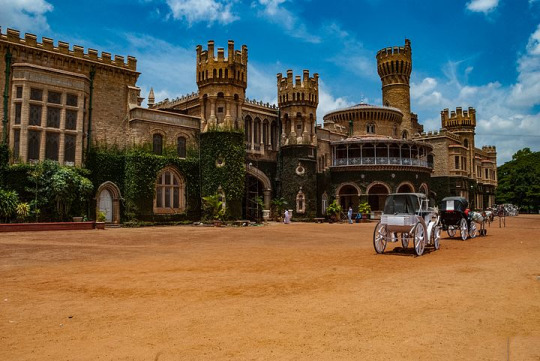
Bangalore has been named as the 'Silicon Valley of India' or the tech capital of India, because of the presence of part of innovation organization in the state. Karnataka's capital city is a notable IT center and a portion of the world's significant It companies work out of the city. Aside from MNCs, Bangalore is likewise home to numerous new businesses and Indian tech organizations.
6. Hyderabad
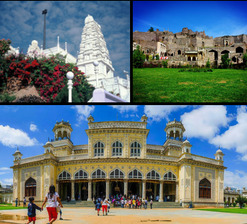
Hyderabad is the city of Nizams and Pearls and joint capital of Telangana and Andhra Pradesh. It is likewise a significant center point of the innovation business of the country. It have predominant foundation including street, power, traffic, metro, wellbeing, great nature of instruction, effectively accessible ability pool and simplicity of carrying on with work.
Hyderabad taxi service
7. Ahmedabad
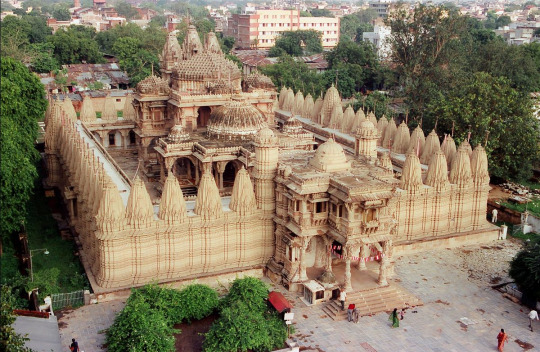
Ahmedabad is an important economic and industrial hub for Gujarat and India. Apart from having good infrastructure it also have some prestigious higher educational institutes like the IIM-A for management, NID for designing, MICA for advertising and GNLU for law, among others.
Ahmedabad Taxi service
2 notes
·
View notes
Note
Ooooo that’s cool you don’t meet people who speak more than English, unless they lying to get the job. I tried Turkish but I couldn’t get past water and bread. Dumb question, what’s Gujarati? Ain’t that patri’s last name?
🙈🙈🙈 this is what Google was made for. So you don’t look like an idiot. Patri’s last name is Guijarro. Gujarati is a language that comes from the west coast state of Gujarat in India.
I exclusively watched Turkish television for a little over a year, so I learned quite a bit in that time. It’s a really pretty language.

1 note
·
View note
Text
India's Well-Known Sites & Gorgeous Train Routes

Experience some of the most beautiful landscapes and culturally rich places within India through Indian Railways. Here's a glimpse into some of the places for you to visit that are well linked with scenic train journeys:
1. Highlights of the New Himalayan Route from Jalpaiguri to Darjeeling: Another UNESCO World Heritage site, also known as the "Toy Train," affords outstanding views of the Himalayan tea gardens as it meanders through the undulating terrain of West Bengal.
- Ghoom Monastery, Tiger Hill, Batasia Loop, and Darjeeling hill station are top points to visit.
2. Konkan Railway Route: Mumbai to Mangalore: Salient features: Running the entire length of the Konkan coast, the route is one of the most picturesque around, characterized by a lot of thick woods, giant waterfalls, and beautiful beaches. The main attractions are the relatively unspoiled beauty of the beaches in Goa, the old town of Ratnagiri, the bustling city of Mangalore, and Dudhsagar Falls.
3. The round-trip Wheeled Palace Route from Rajasthan to Delhi.
The magnificent havelis and forts of Rajasthan may be found on the one hand, while the state's rich cultural legacy can be explored via an amazing luxury train journey on the other.
- Notable sites include the Taj Mahal in Agra, the City Palace in Udaipur, the dunes of Jaisalmer, Ranthambore National Park, and Amber Fort in Jaipur.
4. Mettupalayam to Ooty via the Nilgiri Mountain Railway
Highlights: Passing through the blue hills of Nilgiri, surrounded by tea farms, has a personal feel to it. This site is also included in the UNESCO World Heritage List.
- Important Attractions: Dodabetta Peak, Ooty Lake, Botanical Gardens, and Coonoor, a tiny town.
5. Deccan Odyssey Route: Multiple routes that travel through Maharashtra and beyond—Highlights: On this opulent train, guests have an abundance of options for discovering the natural beauties, historical landmarks, and vibrant cultures of Gujarat, Rajasthan, Karnataka, and Maharashtra.
- Principal Attractions: Lake Palace in Udaipur; Ajanta and Ellora Caves; Mumbai; Tadoba Tiger Reserve.
6. The Golden Chariot Route: Bangalore to Goa and the other way around Highlights: Take a luxurious train ride through Kerala, Goa, Karnataka, and Tamil Nadu, exploring a vast array of historical and natural beauties. Highlights include the beaches in Goa, the backwaters of Kerala, the ruins at Hampi, and Mysore Palace.
7. Mandovi Expressway: Mumbai to Goa Special Features: Main Attractions: The Western Ghats; numerous exquisite bridges and tunnels; Goa's vibrant nightlife; and numerous internationally renowned beaches. The train service provides its passengers with panoramic views of the Arabian Sea, evergreen forests, and the charming rusticity of little hamlets as it moves along the Konkan coast for the better part of the day.
8. Maharajas' Express Route: Road network in Northern and Central India Highlights: Travel to some of the most well-known locations in amazing India on one of the most opulent trains in the world.
- Famous Attractions: The Taj Mahal, the Hawa Mahal in Jaipur, and the Varanasi Ghats
9. The Himalayan Queen route, which connects Shimla and Kalka. Principal Attractions: Passengers can enjoy breath-taking vistas of the highlands as a tiny gauge railway line climbs through the Shivalik Hills, passing via multiple tunnels and bridges. Notable locations include Christ Church, Mall Road, Jakhoo Temple, and Shimla Hill Station.
10. Thar Express Route: Indian Characteristics—Jodhpur to Munabao Across this huge stretch of the Thar Desert, the train can be seen rattling, offering a glimpse into the distinctiveness of the desert's nature and culture.
- Principal Attractions: Jodhpur's Mehrangarh Fort and Bikaner's Junagarh Fort
These well planned train trips provide you with a superb perspective of India's natural splendor and rich cultural legacy. Whether it's luxury, breathtaking scenery, or culture, every rail route aims to provide an experience that passengers will remember for a lifetime.
Discover more about these incredible journeys and plan your next holiday with Holiday Hunter to explore India’s diverse charm and vibrant history.
1 note
·
View note